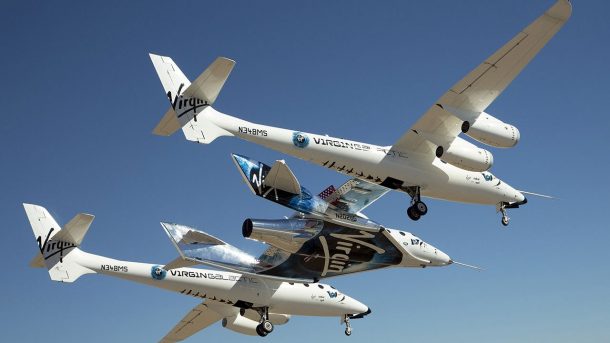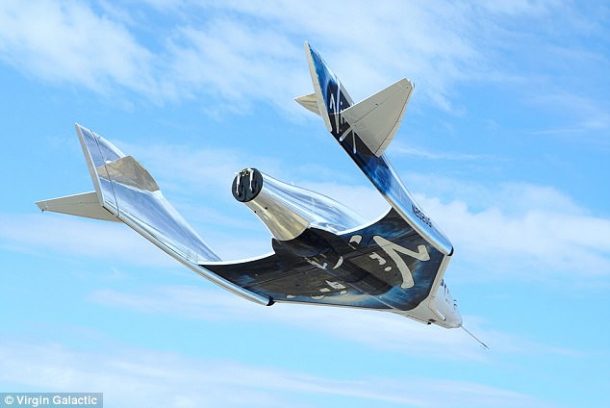Virgin Galactic’s passenger-carrying spaceship VSS Unity just completed the seventh unpowered glider test flight. Mark “Forger” Stucky and Micheal “Sooch” Musacci were the lead test pilots and they ran the spaceship through a number of maneuvers over Mojave, California. It reached the transonic velocity of Mach 0.9 (690 mph) during the flight. This is almost the highest altitude that it can attain without an engine.
The flight that took place on January 11 was a part of the series of dry runs for the VSS Unity. This spaceship has replaced the VSS Enterprise which was lost in a midair accident in 2014. Unity was carried aboard a mothership “VMS Ever” before it was dropped and allowed to return to Earth on a glide path.

The flight was designed to subject the craft to higher acceleration loads and forces in order to simulate conditions of a powered flight and to push its performance envelope. This was also aimed to test the design modifications that Unity went through during months of ground testing leading up to the flight.
The company claims that their spaceship flew with water ballast equivalent in weight to the fully fueled hybrid liquid/solid rocket motor that will one day propel the vehicle into space on a suborbital trajectory. Like the previous flights, the water ballast was jettisoned at a height of 22,000 feet in order to simulate the weight of a returning spacecraft.

This maneuver allows the test program to simulate not only the conditions of ascent but also of the landing. This was also the first time the VSS Unity tested its Thermal Protection System (TPS). The new system gives the upper surface a silvery shine. The system is designed to protect the vehicle against air friction during supersonic flights.
The prospect of an aircraft without an engine is exciting and we will know more once all the tests are complete.


